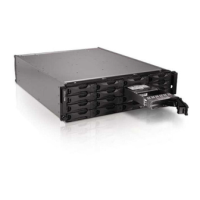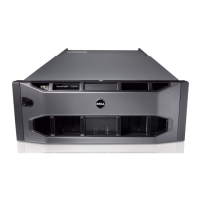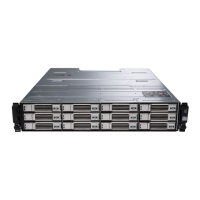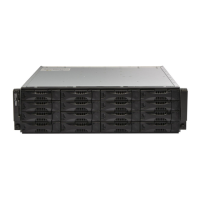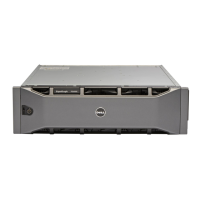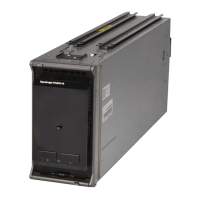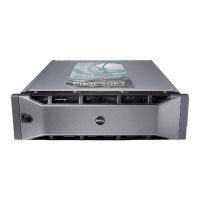March 2013 Dell EqualLogic Configuration Guide v14.1 3-26
3.2.1 RAID level
Each RAID level offers varying combinations of performance, data protection and capacity utilization.
Choose your RAID preference carefully based on reliability, capacity, and performance requirements.
PS Series arrays support the following RAID types:
• RAID 5 (not recommended for business-critical data)
• RAID 6
• RAID 6 Accelerated
• RAID 10
• RAID 50
See RAID Level Characteristics in Table 8 below for detailed information about the RAID types and
their recommended uses.
3.2.2 Drive configuration
The type of drive used in your system factors into choosing an optimal RAID configuration.
The types of drives used in EqualLogic PS Series arrays are listed below.
Class 0 drives are Solid State Drives (SSDs) that offer the highest level of performance. Typically, SSD
have smaller capacities than Class 1 or 2 drives.
Class 1 drives are 10,000 and 15,000 RPM SAS hard drives that offer higher performance and greater
reliability than Class 2 drives.
Class 2 drives are slower 7200 RPM SATA or Near-Line SAS hard drives that offer greater capacities
than Class 1.
If you do not know what types of drives are used in your array, see the Dell EqualLogic PS Series
Storage Arrays Release Notes, which lists the types of drives used with each PS Series model. In
addition, there is labeling on each drive to indicate its capacity and type.
3.2.3 Spare drive policy
Spare drives increase availability by providing redundancy in the event of a hard disk drive failure or a
solid-state disk drive failure. The number of spare drives depends on the array model and the number
of installed drives. For RAID 6 Accelerated, only one hard disk drive is configured as a spare. Spare
HDD drives can be used as spares for either HDD or SSD drives.
Dell does not recommend using any configuration that does not utilize spare drives, although these
configurations can be implemented using the CLI. For more information about using the CLI, refer to
the Dell EqualLogic Group Manager CLI Reference Guide.
3.3 RAID level characteristics
Table 8 summarizes best practices for RAID policy selection. When selecting a RAID policy, you should
consider the level of data protection you require, as well as I/O performance, capacity needs, and the
types of drives contained in your PS Series array.

